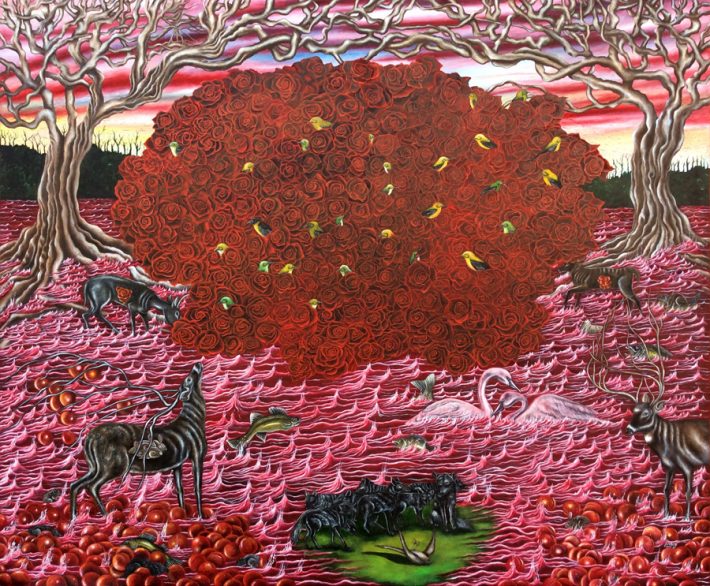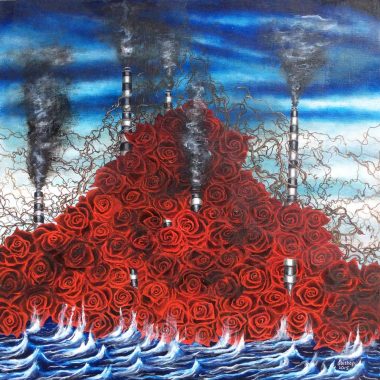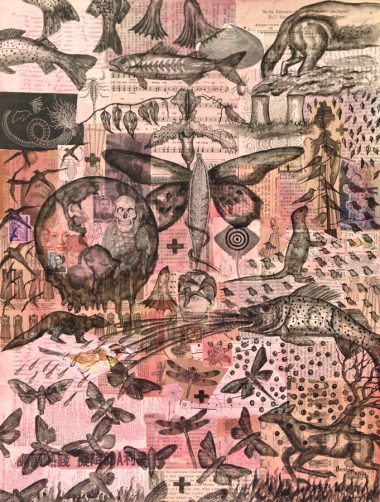By D. Eric Bookhardt, via bestofneworleans.com

After the Rain (Methane), 2014-15 | Oil on Belgian linen | 54 x 65 1/2 inches

Landfill: Mountain, 2015 | Oil on panel | 12 x 12 inches
Billed as an exploration of landscape painting and the complex connections between climate change, species extinction and migration, Jacqueline Bishop’s new show at Arthur Roger Gallery encompasses familiar environmental topics from the daily news. But her imagery evokes a realm of nature so otherworldly that mythology and sorcery may be the most immediate references that come to mind. In fact, art is the mythology of the modern age, the societal equivalent of the dreams that in our individual lives serve to psychically integrate all that we experience and provide the metanarratives that define our sense of who we are and where we are going. Likewise, technology is the sorcery of our time, and in this show, climate change, migration and extinction are the consequences that Bishop transforms into a new mythos, a visionary ecology of the imagination.

Formation of Pearls, 2014 | Mississippi River water, watercolor over collage on board | 24 x 18 inches
Ecology often is viewed as a mechanistic system of checks and balances in the natural world, but it is really about how everything in the world is connected as a totality. Bishop’s large painting, After the Rain (Methane) (pictured), depicts a bevy of birds cavorting in an effusion of roses in a surreal sort of ayahuasca vision in which joyous beauty is framed by skeletal trees and emaciated animals. Not so long ago, pollution from chemical refineries upriver made our sunsets spectacularly gorgeous, a deadly beauty derived from destructive forces that required remedy. Just as crack cocaine burns out the body and mind, our unbalanced exploitation of earthly resources burns out the planet, and this is the drama Bishop depicts in canvases like Landfill: Mountain, where a promontory of roses punctuated with smokestacks is lapped by the waves of a troubled sea. Similarly, her painted collages, made with Mississippi River water, use words and images from the past and present to poetically evoke the ecology of communication — the countless visual and verbal assertions and seductions that comprise the informational echo chamber of our media-saturated age.
